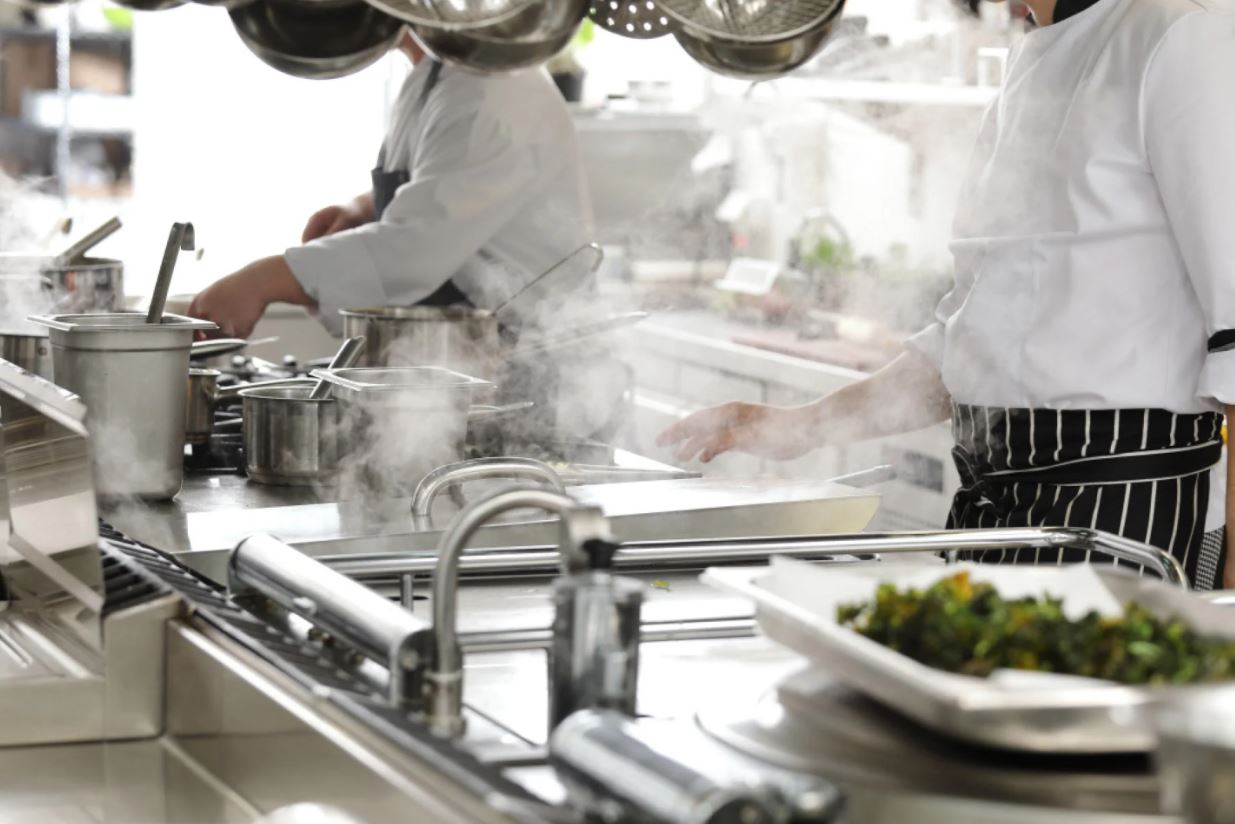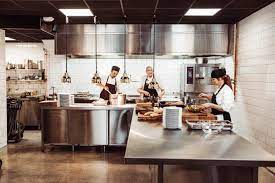The global push for sustainability and the fight against climate change have transformed the way buildings are designed and operated.

Commercial kitchen ventilation design has been a challenge to MEP design engineers for years. Part of the design challenge occurs due to the fact most MEP engineers are not ‘kitchen consultants’
All in all, significant coordination is needed to make sure that the restaurant ventilation is integrated with the activities of the kitchen exhaust systems depending on the cooking activities. The exhaust system design is determined by the usage of cooking equipment. This can vary depending on the food prepared in the restaurant and the types of hood chosen by the commercial kitchen consultant. Hood selection plays a significant role in determining kitchen ventilation performance.
Unfortunately, some factors are overlooked in restaurant MEP design, leading to major issues down the road. In this blog, we’ll look at some of those challenges!

Commercial kitchen MEP design challenges
In general, it’s good practice to discuss with the client some of these issues they’ve experienced in the past with the previous kitchen. Similarly, it’s also important to have the same discussion with the kitchen consultants to get some insights from their past projects. Such discussions give the kitchen consultant and restaurant owner the chance to bring out their insights and ongoing concerns. This will draw them into a discussion with a professional MEP engineer from the start to ensure that the Commercial Kitchen HVAC design meets the needs of that project.
In most cases, the MEP engineer is the only person on the commercial kitchen ventilation design team who understands the engineering complexity of a CVK system that’s combined with other trade requirements.
Other challenges that MEP experience in commercial kitchen ventilation designs are;
The MEP engineer should discuss with the kitchen staff and consultant to understand the location of workers in the kitchen. Some spots in the kitchen are ideal for having spot cooling if directed airflow will not affect exhaust hood functionality. However, as the number of types of foods installed in specialty restaurants continues to grow, the challenge of ensuring comfort for the kitchen staff is becoming more challenging for the MEP engineer. For that reason, it’s important to set the criteria in the early stages of the project to ensure that the required CKV system’s functional performance is designed with proper controls.
The type and location of the selected diffuser should have the ability to handle the amount of make-up air needed in the kitchen, depending on the installed hood type. This is intended to ensure effective air distribution without altering the hood’s effectiveness.
Control odor from the restaurant kitchen to the adjacent spaces is another common HVAC challenge in commercial kitchen ventilation design. Controlling the odor movement into other spaces of a restaurant facility using space differential pressurization can be challenging if there are no differential pressure controllers.
The balancing and testing may work at the maximum point of exhaust setting and system supply. However, the pressure relationship between spaces will vary quickly once multiple VAV exhaust systems or hoods are operated if they’re not controlled in some manner.
Variable airflow in any commercial kitchen is only effective when there are appropriate controls to measure airflow. Besides, it’s impossible to directly measure what cannot be controlled directly. Therefore, open-loop indirect-type controls will depend on balancing and resign setup that’s not likely to always maintain kitchen pressure relationships unless the HVAC design has some level of space distinction pressure control. When a demand ventilation control strategy is introduced in the early design stages, the MEP engineers should know how to vary the exhaust to ensure that the supply air is controlled accordingly.
Improper hood sizing and selection will affect the capture of smoke, heat, and grease-laden air from cooking appliances under the kitchen. The hood’s ability to function properly relies on the layout of equipment under the hood and the air currents from supply-air diffusers that may interfere with the hood’s capturing ability. In this regard, care should be taken to understand the capture velocities a certain hood is designed for and the hood type. More importantly, an MEP engineer should review the cooking equipment specification with the kitchen consultant. This is intended to ensure that there is complete, concise, and proper integration of the kitchen hood controls with the make-up and supply-air controls proposed by the Commercial kitchen HVAC design engineer.
Although grease management isn’t necessarily a point of Commercial Kitchen Ventilation design, it’s an important aspect of MEP design. For that, it needs discussion to ensure maintainable and safe installation of the fans and exhaust duct.
Many grease management installations are designed hastily and installed with hard-to-access ducts. Also, fans are located in areas that are hard to access for services such as ducts or walls. Whichever the case, grease management within an exhaust duct system is as essential as any other CKV design aspect for the safety of the kitchen staff and patrons in the restaurant facility. More importantly, it should be designed by a professional MEP design engineer.
Final Word
Commercial kitchen ventilation design should consider comfort, space differential pressure, hood capture effectiveness, energy used for make-up air conditioning, and supply air distribution air currents. This will ensure that the restaurant kitchen has adequate ventilation at all times.
However, this isn’t a simple engineering task as it can have various design challenges. Instead, you’ll need proper control and good engineering to properly design and operate a CKV system. If your restaurant is based in California, Contact Innodez Design & Engineering today to talk to one of our licensed commercial kitchen ventilation design professionals.
About Author
InnoDez